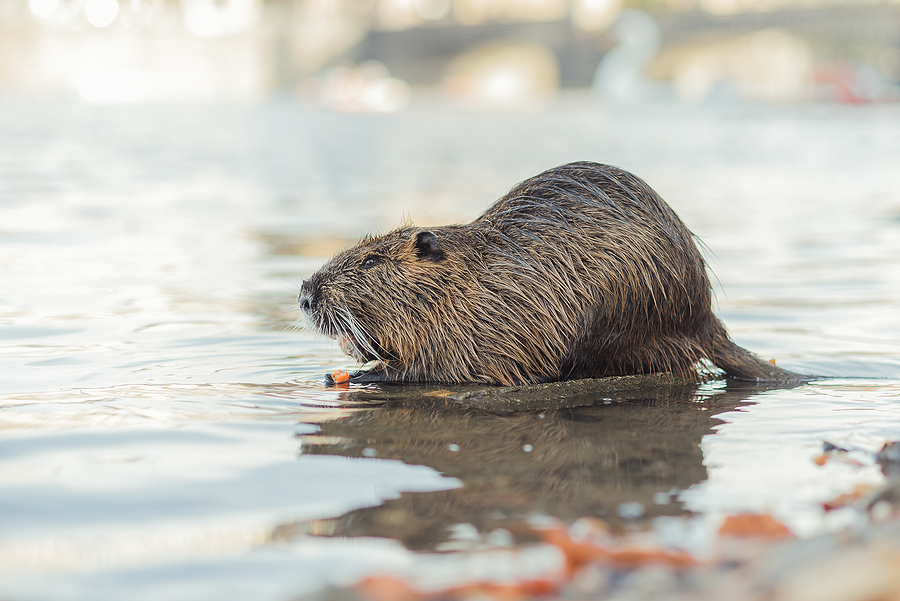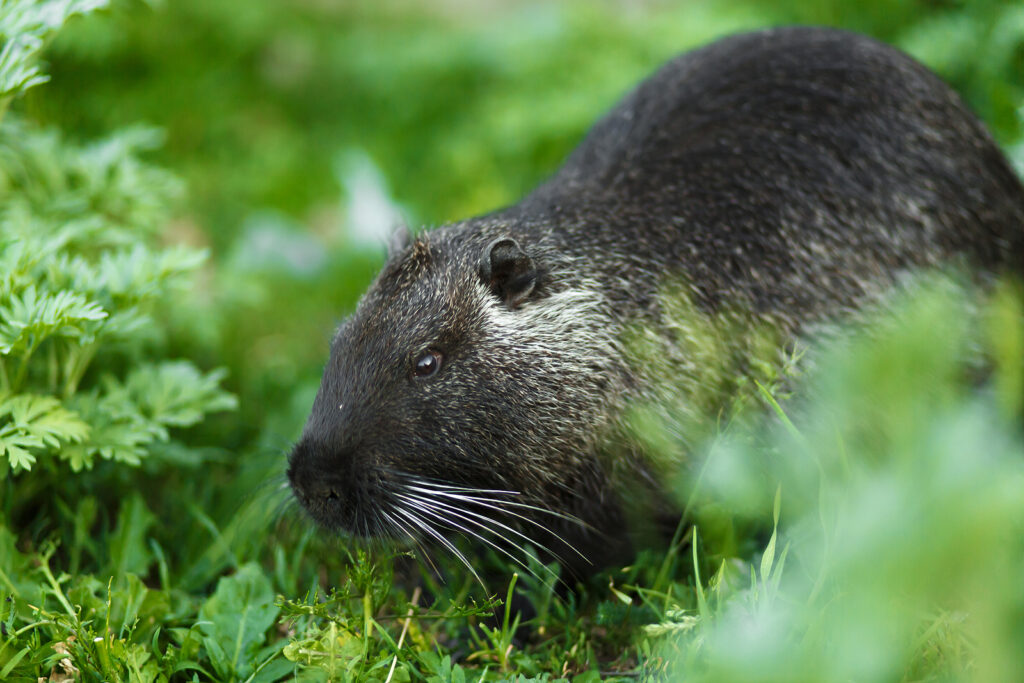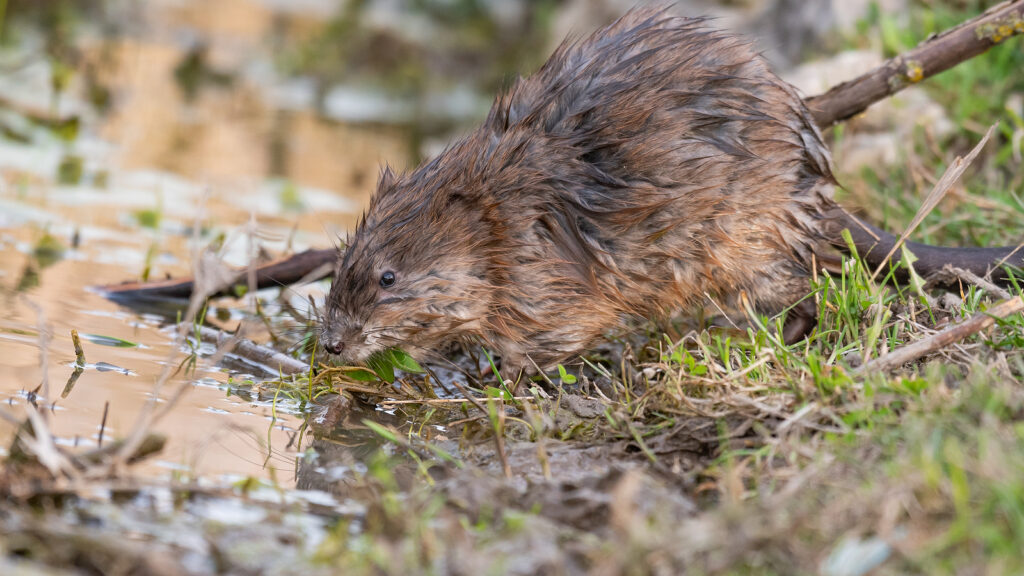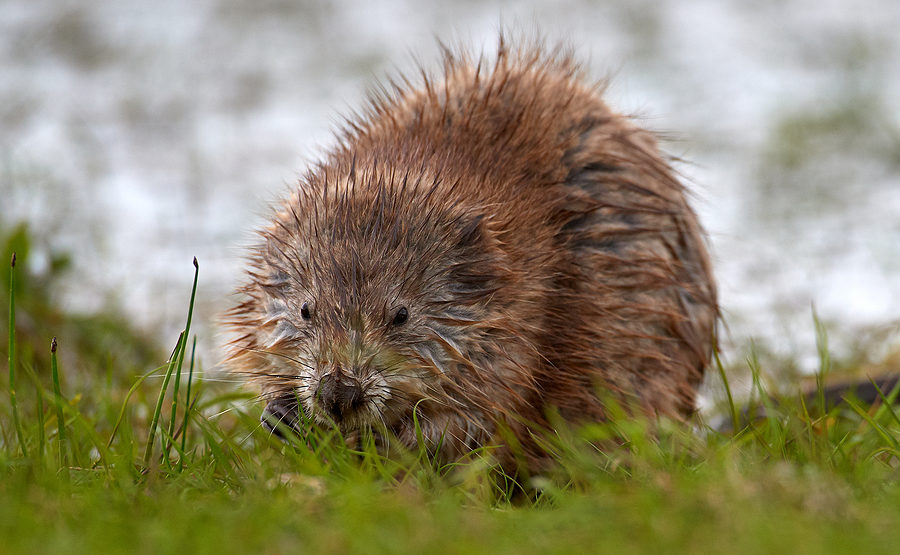Muskrats might look harmless, but their burrowing habits can cause significant damage to your property and pose a risk to your safety. If you’re dealing with a muskrat invasion, you need reliable and effective solutions.
Welcome to our comprehensive guide on muskrat removal and control. Here, we will delve into proven methods of muskrat control, the use of muskrat repellent, and tips to prevent future muskrat infestations. Equipped with the right information, you can tackle muskrat issues promptly and efficiently.
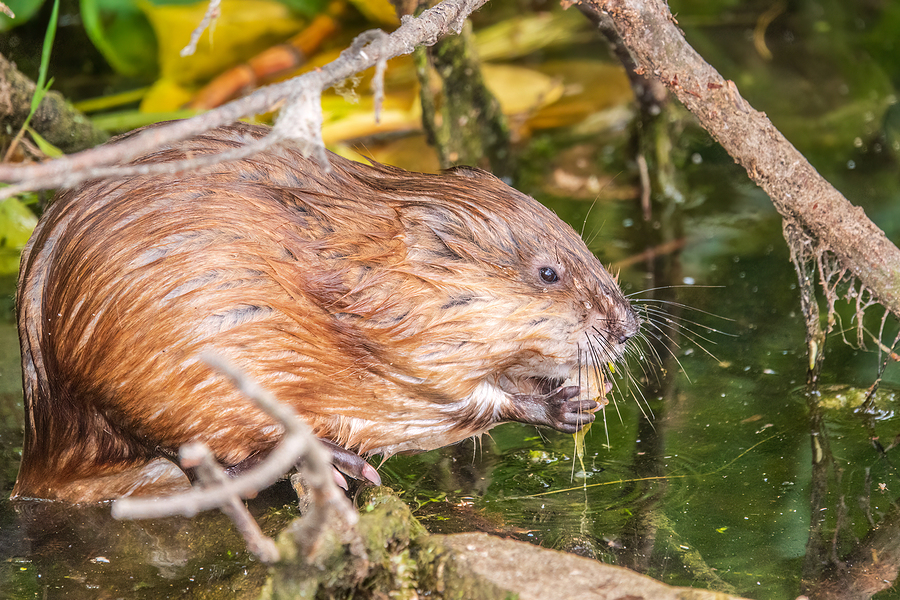
What is a Muskrat?
The muskrat (Ondatra zibethicus) belongs to the rodent family and is found throughout North America. A large semiaquatic mammal, the muskrat can grow up to 2 feet in length and weigh over 4 pounds. They have thick fur with hues ranging from dark brown to yellow and black, webbed hind feet for swimming, and a long flat tail.
How to Identify a Muskrat Infestation
How to Identify a Muskrat Infestation Muskrats are social animals that prefer living in colonies with up to 12 members. Even if you don’t spot them scurrying about your property, the telltale signs of muskrat infestations include:
▷ Burrows or lodges near bodies of water
▷ Trails and pathways in the mud or soil
▷ Damaged crops, trees, and plants
▷ Uneaten fish or poultry near the water
Muskrat Control Methods
The most effective way to handle a muskrat problem is to implement control methods. Some of the most popular options include:
▶ Traps
Trapping is one of the most common methods of muskrat removal. Live traps should only be set and checked by licensed Indiana wildlife control operators like Budget Animal Removal. Moreover, traps should be placed in heavily damaged areas near waterbodies or burrows. Never attempt to touch, trap, harm, or kill muskrats in Indiana – you could be penalized.
▶ Repellents and Deterrents
Repellent sprays are a good option for controlling muskrats since they create an unpleasant smell or taste in the surroundings that repels muskrats. Repellents can be used to both deter and remove muskrats from the infested areas, as well as prevent them from coming back.
▶ Fencing
Fencing is another effective way of preventing muskrat activity on your property. Installing a fence along the edge of ponds or other bodies of water can deter muskrats from entering, while also ensuring that your plants and crops are safe.
▶ Professional Wildlife Control
Lastly, of the most effective ways to get rid of muskrats is to hire a professional wildlife control company in Indianapolis. Licensed and insured animal removal companies have the expertise and tools necessary to safely and effectively remove these creatures while preventing them from returning in the future. These services are crucial for maintaining a healthy ecological balance while also keeping communities safe.
Muskrat Prevention Tips
The best defense against muskrats is prevention. Here are some tips you can follow to keep them away:
▷ Keep your yard and garden well-maintained.
▷ Maintain a clean landscape around the pond or waterbody.
▷ Repair or replace damaged fences, gates, and screens that can give muskrats access to your property.
▷ Avoid feeding ducks, geese, swans, and other animals near bodies of water, as it can attract muskrats.
▷ Avoid leaving food around your property, as it might attract muskrats.
▷ Remove all water sources from your yard to prevent muskrat infestations.
▷ Repellents or baits on the property line can also help discourage muskrats from entering.
▷ With these tips in mind, you can keep muskrats away from your property and enjoy a safe, pest-free environment.
By using the right techniques and applying proper prevention methods, you can ensure that your home is safe from damage caused by muskrats. Start by contacting Budget Animal Removal at 317-875-3099 for DNR licensed and insured muskrat removal and control in Indianapolis, Indiana, and surrounding counties. Request a free estimate or advice, today!
Related Posts:
Facts About Wildlife Control For Nuisance Muskrats
Frequently Asked Questions About Muskrats
Facts About Muskrats to Protect Your Property From Damage

